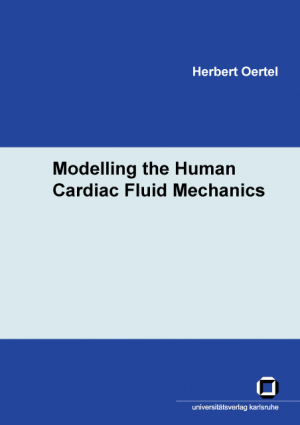Herbert Oertel
Modelling the Human Cardiac Fluid Mechanics
We present a virtual heart model simulating the flow in the left human ventricle and in the aorta. Because of the lack of in vivo structure data of the human ventricle, the active ventricle movement is given by a time-dependent ventricle model that is derived from in vivo image data of a nuclear spin MRT tomograph of a healthy human heart. The passive part of the virtual heart model consists of a model aorta and vena cava, and of heart valves. As the movement is due to the flow in the inactive region of the heart, a coupling of flow and structure is necessary in the model to take into account the deviation of the aorta and the closing and opening of the heart valves. The flow calculation is performed with a finite volume method, while the structure of the aorta is calculated using the finite element method. The flow resistance of the time simulation in the body is taken into account with a circulation model. In the outlook of the article, we show how the virtual heart model can be used to predict flow losses due to pathological ventricle contraction defects in an unhealthy human heart.

